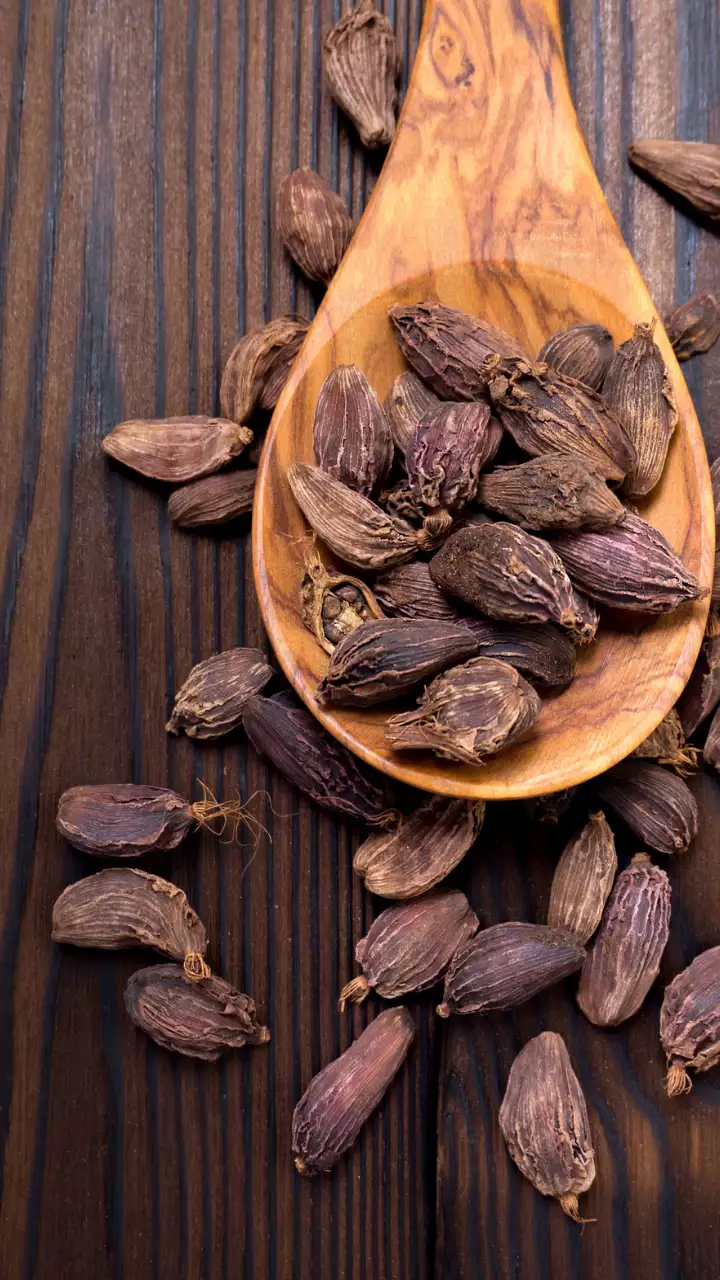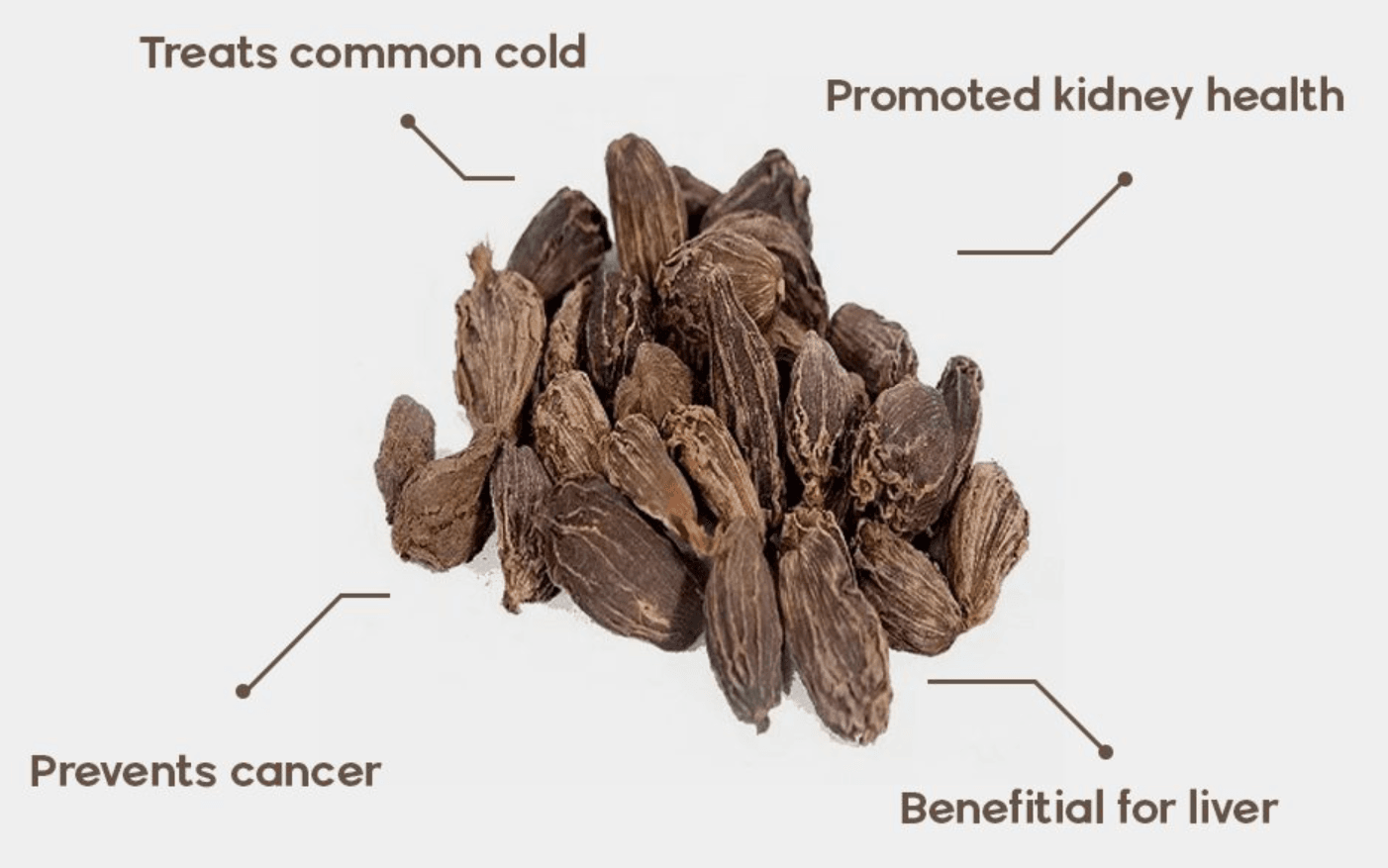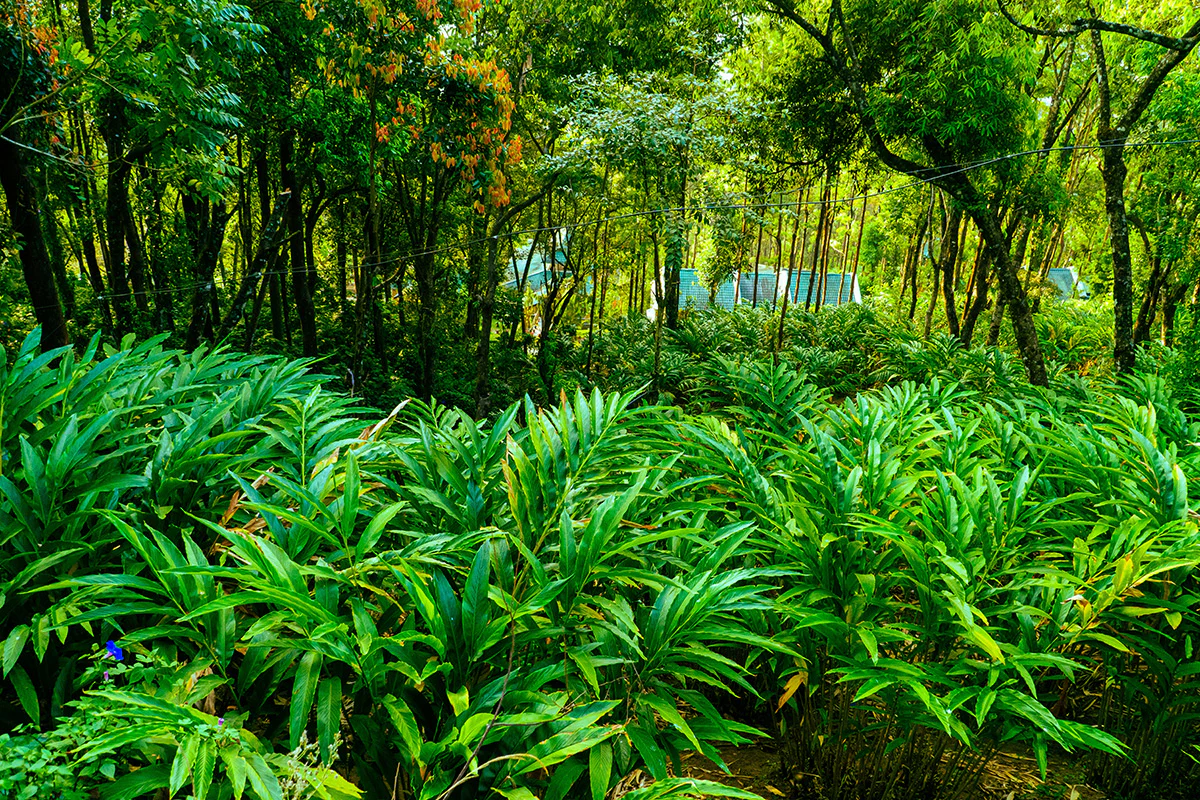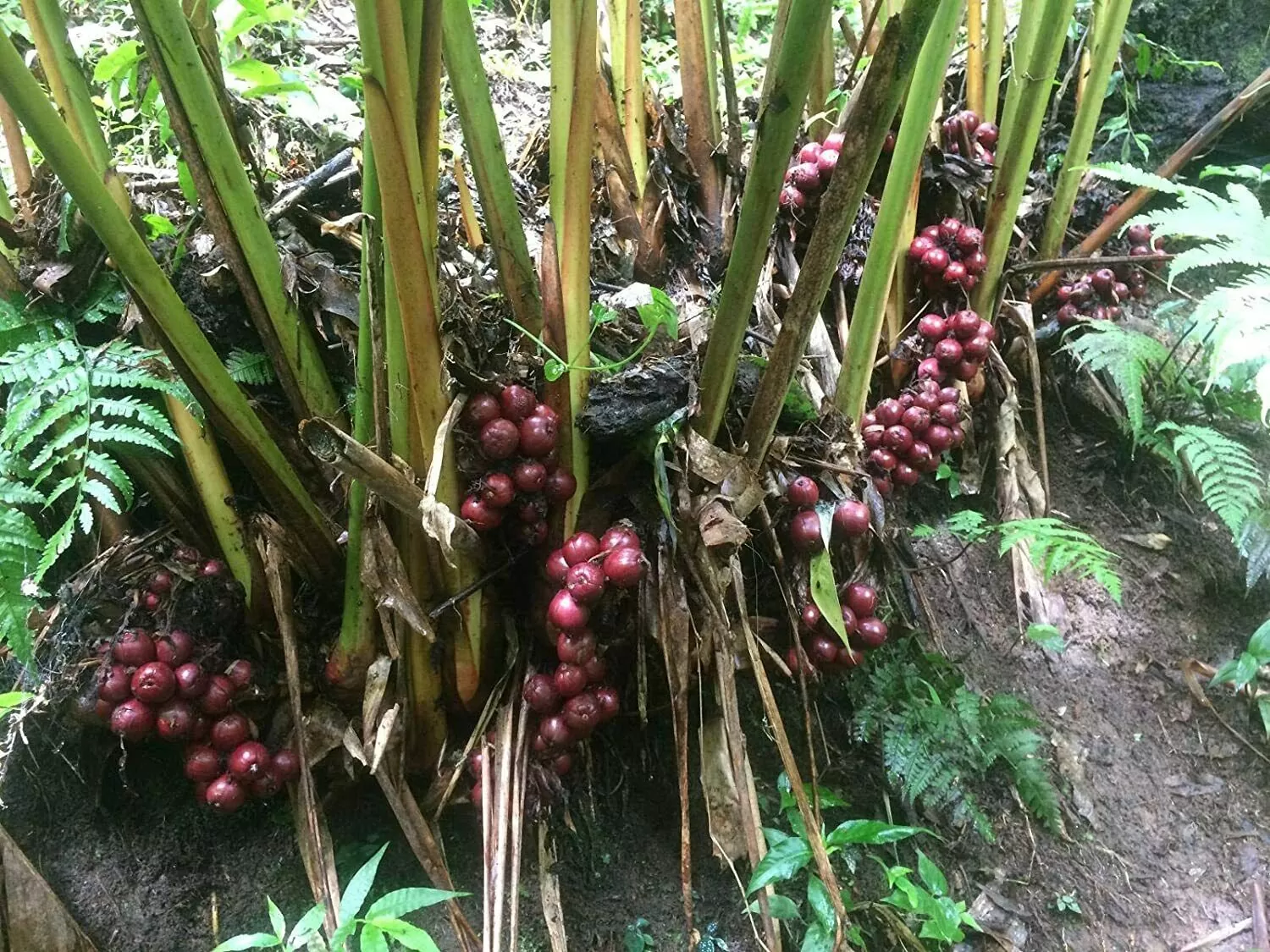
Summary of Contents
Introduction to the Smoky Spice
Large cardamom, commonly known as Badi Elaichi or Black cardamom, is not your average spice. This variety of cardamom is a powerful symbol of Sikkim’s rich agricultural heritage and holds a cherished place in Northeast India’s cuisine, economy, and traditional medicine. With a smoky, earthy flavor, large cardamom is often the secret behind hearty Indian dishes. However, its significance goes beyond the kitchen; it has incredible health benefits, cultural value, and economic importance that have made it a staple in the region.
Natural Habitat and Varieties
Large cardamom thrives in the cool, shaded forests of Northeast India, particularly in the high-altitude regions of Sikkim. This aromatic spice, scientifically known as Elettaria cardamomum, is a member of the Zingiberaceae family, which also includes ginger and turmeric. This botanical kinship is reflected in the shared beneficial properties these spices possess.
- High-Altitude Regions: Large cardamom prefers the cooler temperatures and higher altitudes of Northeast India, where it finds optimal conditions for growth.
- Shaded Forests: The spice thrives in the understory of evergreen forests, where it benefits from the protection of tree canopies and the constant supply of organic matter.
- Nutrient-Rich Soil: Large cardamom requires well-drained, nutrient-rich soils to flourish, which are abundant in the mountainous regions of Northeast India.
- Zingiberaceae Family: As a member of the Zingiberaceae family, large cardamom shares several botanical characteristics and medicinal properties with ginger and turmeric. These spices are known for their digestive, antioxidant, and anti-inflammatory properties, which are attributed to their common phytochemical compounds.
Varieties of Large Cardamom
Large cardamom, while a staple in the Northeastern Indian states, is not a one-size-fits-all crop. The region boasts a rich diversity of varieties, each with its own distinct characteristics, contributing to the unique flavor profiles of the dishes they are used in.
- Ramsay: This variety is prized for its larger pods and subtle, mild taste. It is often used in dishes where a delicate cardamom flavor is desired, without overpowering the other ingredients.
- Golsey: Known for its smoky flavor, Golsey is a popular choice for traditional stews and curries. Its intense aroma adds depth and complexity to dishes, making it a versatile ingredient in the kitchen.
- Sawney: While smaller in size compared to Ramsay and Golsey, Sawney packs a powerful punch with its intense aroma. Its unique flavor profile can elevate dishes with a subtle but noticeable twist, adding a distinctive touch to the culinary experience.
The diversity of large cardamom varieties in the Northeastern states is a testament to the region’s rich agricultural heritage. Each variety offers its own unique contribution to the local cuisine, ensuring that every harvest brings a fresh and exciting flavor experience.
History and Tradition in Northeast India
The history of large cardamom in Northeast India is deeply intertwined with the region’s cultural and economic development. While the exact origins of its cultivation in the area are unclear, it is believed that the spice was introduced from neighboring regions, possibly Nepal or Bhutan, centuries ago.

The cultivation of large cardamom in Northeast India likely began in the hilly regions of Sikkim, Arunachal Pradesh, and Assam, where the favorable climate and soil conditions provided an ideal environment for its growth. The spice’s aromatic properties and medicinal value quickly made it a prized commodity, both locally and regionally.
Traditional Practices and Medicinal Uses
Large cardamom has a long history of medicinal use in Sikkim, where it has been employed for centuries to treat a variety of ailments. Its traditional applications reflect the deep-rooted knowledge and wisdom of the region’s people.
- Aiding Digestion: Large cardamom has been traditionally used to aid digestion and alleviate symptoms such as bloating, flatulence, and indigestion. Its aromatic properties are believed to stimulate the secretion of digestive enzymes, promoting efficient food breakdown.
- Relieving Congestion: The spice has been employed as a remedy for respiratory issues, such as cough, cold, and congestion. Its warming properties are thought to help loosen phlegm and soothe irritated airways.
- Improving Blood Flow: Large cardamom has been used to improve circulation and promote overall well-being. Its warming nature is believed to enhance blood flow and stimulate the body’s natural healing processes.
- Keeping Warm: Due to its warming properties, large cardamom was considered an essential ingredient in winter preparations. It was often used in teas, tonics, and traditional remedies to provide warmth and comfort during the colder months.
- Folk Remedies: Today, large cardamom continues to be used in folk remedies, symbolizing the preservation of ancient knowledge and traditions. It is often incorporated into herbal preparations, teas, and poultices to address various health concerns.
The traditional medicinal uses highlight its versatility and effectiveness as a natural remedy. While modern medicine has advanced significantly, the spice’s enduring popularity in traditional practices underscores its continued value as a valuable component of the region’s cultural heritage.
Cultural Significance in Sikkim
Large cardamom is often referred to as the “black gold” of Sikkim, reflecting its economic importance and cultural pride. Its use in religious ceremonies, festivals, and local cuisine further solidifies its place as a cultural icon in Northeast India.
- Sacred Rituals: Large cardamom plays a pivotal role in various religious ceremonies and rituals practiced in Sikkim, such as Buddhist and Hindu pujas. Its aromatic properties are believed to purify the environment and attract divine blessings.
- Festival Celebrations: The spice is an indispensable ingredient in the preparation of traditional offerings and delicacies served during festivals like Losar, a Tibetan New Year celebration.
- Cultural Icon: Beyond its religious connotations, large cardamom has become a cultural symbol of Sikkim, representing the region’s rich heritage and natural bounty. It is often incorporated into local art, music, and folklore, reflecting its deep-seated connection to the people and their traditions.
Health Benefits of Large Cardamom
Large cardamom isn’t just popular for its flavor; it’s loaded with health benefits that make it a valuable ingredient in traditional and modern wellness practices.

Digestive Health Booster
Large cardamom is a natural digestive aid, commonly used to soothe indigestion and bloating. Its essential oils stimulate the production of digestive enzymes, making meals easier to digest, especially heavy foods common in Northeast Indian cuisine.
- Natural Digestive Aid: Large cardamom is a natural digestive aid, commonly used to soothe indigestion, bloating, and other digestive discomforts.
- Enhancing Digestion: Its essential oils stimulate the production of digestive enzymes, making it easier to digest heavy foods, especially those commonly found in Northeast Indian cuisine.
Antioxidant Powerhouse
With high levels of vitamins C and A, large cardamom is packed with antioxidants that help neutralize free radicals. This not only protects cells but also reduces the risk of chronic diseases, supporting overall well-being.
- Neutralizing Free Radicals: Packed with antioxidants like vitamins C and A, large cardamom helps neutralize harmful free radicals, protecting cells from damage.
- Reducing Disease Risk: This antioxidant activity contributes to a reduced risk of chronic diseases, promoting overall well-being.
Respiratory Health and Congestion Relief
Large cardamom’s smoky aroma isn’t just for show—it’s known to clear airways and provide respiratory relief. Sikkimese households have used it to relieve congestion and ease coughs, especially during colder seasons.
- Clearing Airways: The spice’s smoky aroma is known to clear airways and provide respiratory relief.
- Easing Congestion: Sikkimese households have traditionally used large cardamom to relieve congestion and ease coughs, especially during colder seasons.
Anti-inflammatory and Pain Relief
Thanks to its active compounds, large cardamom acts as a natural anti-inflammatory agent. It’s often used to relieve joint pain and muscle soreness, adding value as a functional spice that goes beyond flavor.
- Natural Anti-inflammatory: Large cardamom contains active compounds that act as natural anti-inflammatory agents.
- Relieving Pain: This anti-inflammatory property makes it useful for relieving joint pain, muscle soreness, and other inflammatory conditions.
The health benefits of large cardamom extend far beyond its flavorful reputation. Its digestive, antioxidant, respiratory, and anti-inflammatory properties make it a valuable ingredient in traditional remedies and modern wellness practices. Incorporating large cardamom into your diet can contribute to a healthier and more balanced lifestyle.
Ideal Growing Conditions for Large Cardamom
Large cardamom has specific environmental needs, thriving in cool, shaded, and humid conditions. The forests of Northeast India, particularly Sikkim, provide an ideal setting where cardamom grows under natural canopies, benefiting from the region’s unique ecology.
- Temperate and Humid: The state’s temperate climate, characterized by mild temperatures and high humidity levels, provides an optimal environment for large cardamom growth.
- Rainfall: Sikkim receives abundant rainfall throughout the year, ensuring adequate moisture for the plant’s development and preventing water stress.
- Elevation: The spice is typically grown at elevations between 600 and 2,000 meters, where it benefits from cooler temperatures and protection from extreme weather conditions.
- Nutrient-Rich: Large cardamom prefers well-drained, loamy soil that is rich in organic matter. This type of soil provides adequate aeration and nutrient retention, essential for healthy plant growth.
- Forest Understory: The spice thrives in the shaded understory of evergreen forests, where it benefits from the protection of tree canopies which helps regulate temperature, preventing the plant from experiencing excessive heat stress and the constant supply of organic matter from decomposing leaves and other plant material.
The combination of Sikkim’s favorable climate and fertile soils creates the perfect conditions for cultivating large cardamom of exceptional quality. This natural synergy has played a crucial role in establishing the state as a leading producer of this valuable spice, contributing to its economic prosperity and cultural heritage.
Best Sustainable Farming Practices
To ensure the long-term viability of large cardamom cultivation and protect the region’s delicate ecosystems, Sikkimese farmers have embraced sustainable agricultural practices. These methods not only help maintain the quality of the spice but also contribute to the state’s green agricultural goals.

Agroforestry: Integrating Cardamom with Nature
In Sikkim’s agroforestry model, large cardamom is grown alongside trees and other vegetation. This method provides natural shade, improves soil fertility, and reduces the need for chemical inputs, making it one of the most sustainable methods for cultivating cardamom.
Organic Pest Control
Instead of pesticides, farmers use companion planting and natural deterrents to manage pests. For example, planting ginger alongside cardamom can help repel pests, a practice rooted in traditional wisdom. Other natural deterrents, such as neem oil or botanical extracts, may also be used to control pests without harming beneficial insects.
Vermicomposting for Soil Health
Vermicomposting—using earthworms to break down organic matter—is a popular practice. This method enriches the soil naturally, promoting healthy plant growth while minimizing the use of synthetic fertilizers.
Economic Impact of Large Cardamom
Large cardamom has emerged as a lucrative crop for Sikkim and other Northeastern states, contributing significantly to the region’s economy. With its rising global demand, the crop offers attractive profit margins for farmers.
Profitability
- High Returns: Farmers in Sikkim can earn substantial income from a relatively small cardamom plantation. The spice commands a premium price in both domestic and international markets, ensuring high profitability. The average price of large cardamom in India can range from ₹300 to ₹500 per kilogram.
- Increasing Demand: The global demand for large cardamom has been steadily rising, driven by its culinary and medicinal applications. This growing demand has led to increased prices and higher returns for farmers. According to recent data, the global market for large cardamom is expected to grow at a CAGR of 5% over the next few years.
Export Market
- Major Export: Large cardamom is one of the primary export products of Sikkim, with significant shipments to countries in the Middle East and Southeast Asia.
- Cultural Significance: In these regions, the spice is highly valued for its culinary and medicinal uses, contributing to its strong export demand.
- Economic Benefits: Exporting large cardamom helps sustain the local economy by providing jobs and a steady income stream for farmers and related industries. According to the Indian Ministry of Commerce, the annual export of large cardamom from India has been steadily increasing.
Government and NGO Support
- Subsidies and Training: To support cardamom farmers, the government and several NGOs provide subsidies, training, and market access. This assistance has enabled farmers to improve yields and adopt more efficient farming techniques, strengthening the region’s agricultural foundation.
Challenges in Growing Large Cardamom
While large cardamom offers lucrative opportunities, farmers in Northeast India face several challenges that can impact their livelihoods. These include:

Pest and Disease Pressure
- Root Grubs and Viral Diseases: Large cardamom is susceptible to a range of pests, including root grubs, and viral diseases that can cause significant crop damage.
- Organic Challenges: Farmers who rely solely on organic pest control methods may find it difficult to manage these threats effectively, as chemical pesticides are often used to combat them.
Climate Sensitivity
- Unpredictable Rainfall: Changes in climate patterns, such as unpredictable rainfall and temperature fluctuations, can adversely affect large cardamom cultivation.
- Yield Variability: The crop’s reliance on specific climate conditions makes it vulnerable to the impacts of climate change, which can lead to fluctuations in yield and quality.
Market Risks
- Price Volatility: The price of large cardamom can be volatile, influenced by factors such as global demand, supply, and exchange rate fluctuations.
- Limited Market Access: Despite the rising demand, many small-scale farmers still face challenges in accessing broader markets. This can limit their ability to command higher prices and expand their customer base.
- Cooperative Challenges: While cooperatives have played a crucial role in improving market access for farmers, they may also face challenges related to governance, efficiency, and transparency.
Additional Risks
- Labor Shortages: The availability of skilled labor for large cardamom cultivation can be a challenge, particularly during peak harvesting seasons.
- Infrastructure Constraints: Inadequate infrastructure, such as roads and transportation facilities, can hinder the timely delivery of cardamom to markets.
- Policy Uncertainty: Changes in government policies or regulations can create uncertainty for farmers, affecting their investment decisions and overall profitability.
Aromatic Adventures of Large Cardamom
Large cardamom, with its distinctive smoky flavor and numerous health benefits, is a versatile ingredient that finds applications in various domains, from culinary delights to traditional remedies and value-added products.

Culinary Delights
- Spicing Up Indian Cuisine: Large cardamom is a staple ingredient in Indian cuisine, adding depth and complexity to curries, stews, and rice dishes. Its smoky flavor complements the rich textures and bold spices often used in these regional specialties.
- Aromatic Teas and Blends: Beyond savory applications, large cardamom is frequently used in aromatic teas and spice blends. Its warming properties and unique flavor profile make it a popular choice for creating comforting and flavorful beverages.
Value-Added Products
- Cardamom Powder: Ground cardamom powder is a convenient form of the spice, widely used in cooking, baking, and the preparation of spice blends. Its versatility and ease of use have made it a popular choice in both domestic and international markets.
- Essential Oils and Extracts: The essential oil extracted from large cardamom is highly prized for its aromatic properties and potential health benefits. It is used in aromatherapy, perfumery, and personal care products for its calming and invigorating effects.
- Infused Honey: Cardamom-infused honey is a delicious and healthful product that combines the sweetness of honey with the aromatic and medicinal properties of large cardamom. It is often used as a natural sweetener, a flavor enhancer, and a traditional remedy.
Conclusion
Large cardamom is a treasure of Northeast India, symbolizing both economic potential and cultural heritage. From its robust health benefits to its role in supporting sustainable farming, large cardamom is more than just a spice—it’s an emblem of Sikkim’s commitment to organic agriculture and rural development.
To discover more unique crops from this region, check out our Top 20 Crops in Northeast India. You’ll find a variety of crops, each with its own story, that reflect the incredible diversity and resilience of Northeast India’s agricultural landscape.
FAQ Section
Q: What is the profit of cardamom farming?
A: Large cardamom farming is highly profitable, especially in Sikkim and Northeast India. Farmers typically earn 20-30% profit margins depending on yield, market demand, and quality, with exports fetching premium prices in international markets.
Q: What is the cost of cultivation of large cardamom?
A: Cultivation costs vary, but on average, establishing a large cardamom farm costs around ₹2-3 lakhs per acre due to expenses like planting materials, organic fertilizers, and labor. Maintenance costs decrease in subsequent years, especially for organically grown cardamom.
Q: What is the yield of large cardamom?
A: Large cardamom yields can range from 300-500 kg per acre under optimal growing conditions. Yield depends on factors like soil quality, climate, and farming practices, with organic and shaded environments often yielding better-quality pods.
Q: Is cardamom export profitable?
A: Yes, exporting large cardamom is highly profitable due to its demand in international markets, especially in countries like the Middle East and Southeast Asia. High-quality, organically grown cardamom from Northeast India fetches a premium price abroad.
Q: How many cardamom trees per acre?
A: Approximately 1,000 to 1,200 cardamom plants can be planted per acre, depending on spacing and the planting method. Maintaining optimal plant density helps ensure adequate sunlight and ventilation, crucial for healthy growth.
Q: What is the lifespan of a cardamom plant?
A: A well-maintained cardamom plant has a productive lifespan of about 15-20 years. With proper care, including organic fertilization and shade management, plants can yield pods for several decades.
Q: What is the best fertilizer for cardamom?
A: Organic fertilizers like compost, farmyard manure, and vermicompost are best for large cardamom, especially in Northeast India, where organic farming is encouraged. Adding natural nutrients supports sustainable growth without harming soil health.
Q: Which country consumes most cardamom?
A: The Middle East is the largest consumer of cardamom, where it’s used in food, beverages, and traditional medicines. Countries like Saudi Arabia and the UAE import large quantities of cardamom annually.
Q: What is special about Sikkim large cardamom?
A: Sikkim’s large cardamom is unique for its organic cultivation methods and smoky flavor, attributed to the region’s high-altitude, shaded forests. It’s widely respected for quality, making it highly sought-after in both domestic and international markets.
Q: Can we eat cardamom daily?
A: Yes, consuming cardamom daily in small amounts is safe and beneficial, aiding digestion, freshening breath, and providing antioxidants. However, it’s best enjoyed in moderation as part of a balanced diet.
